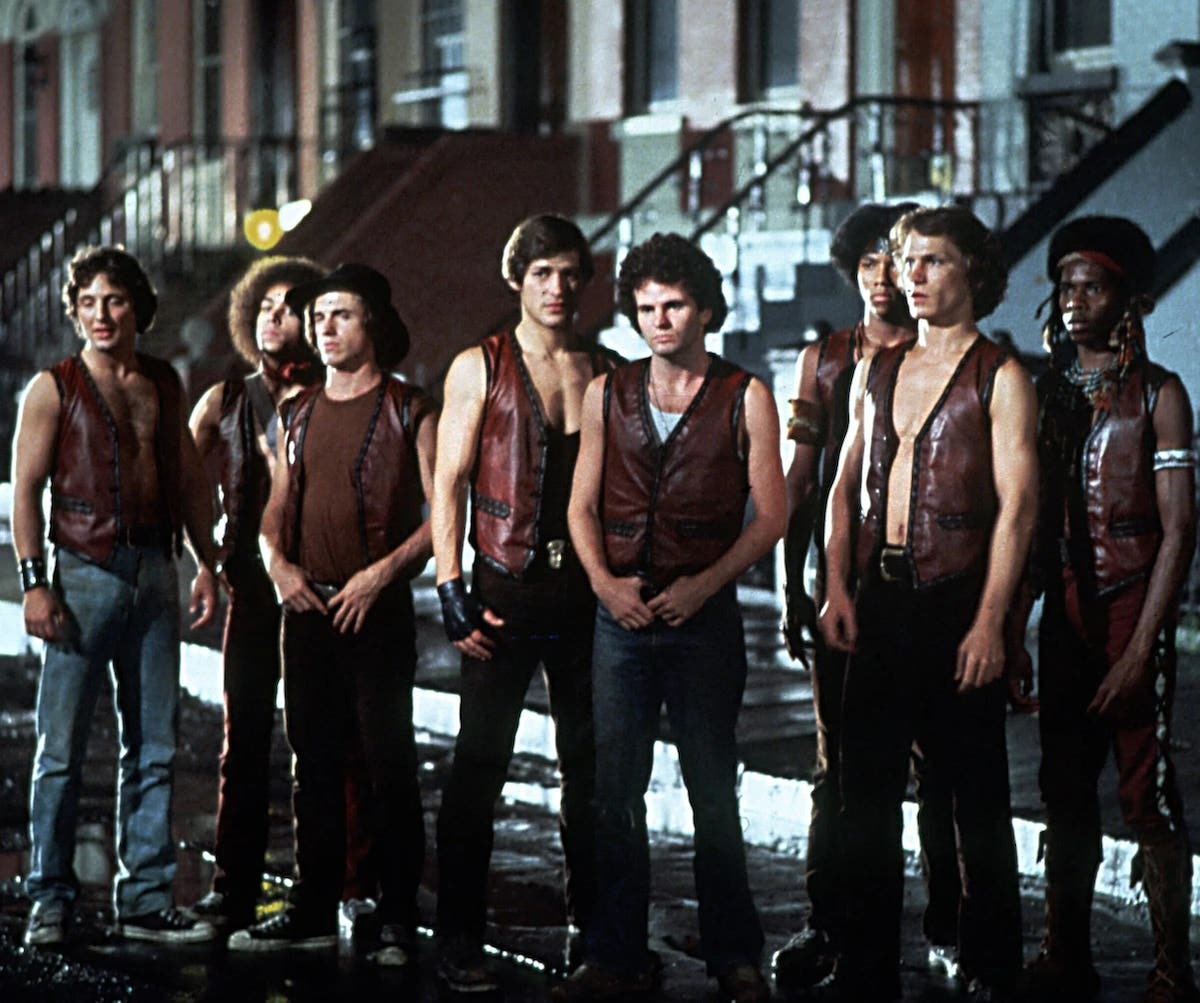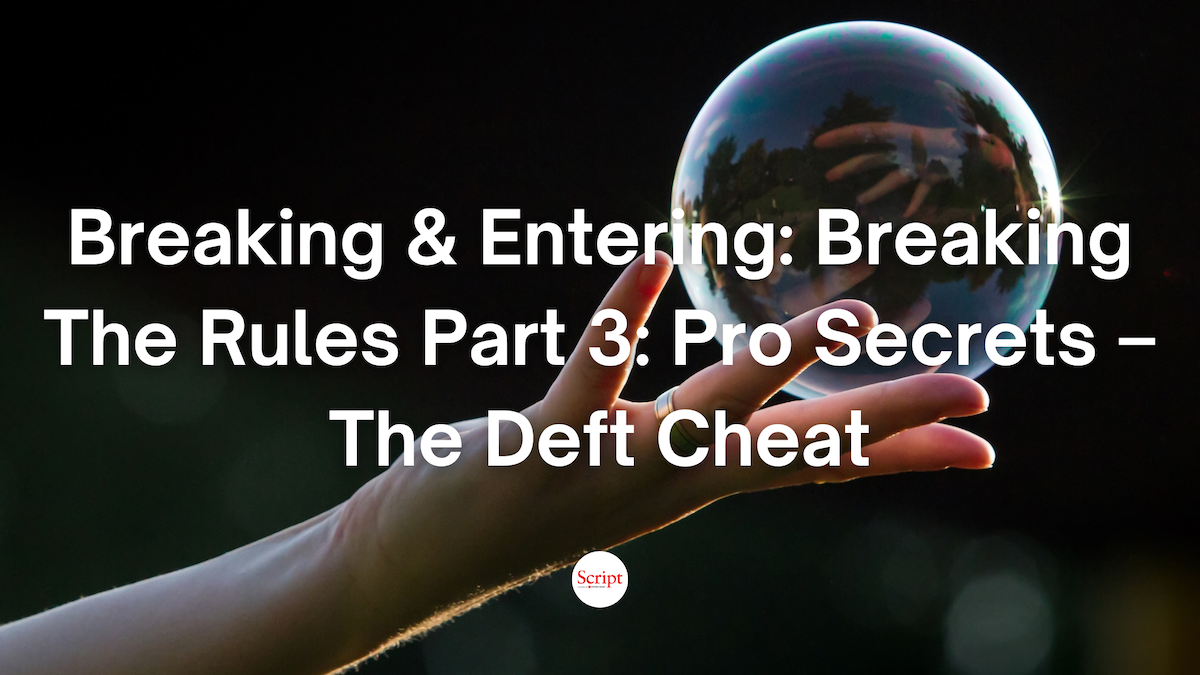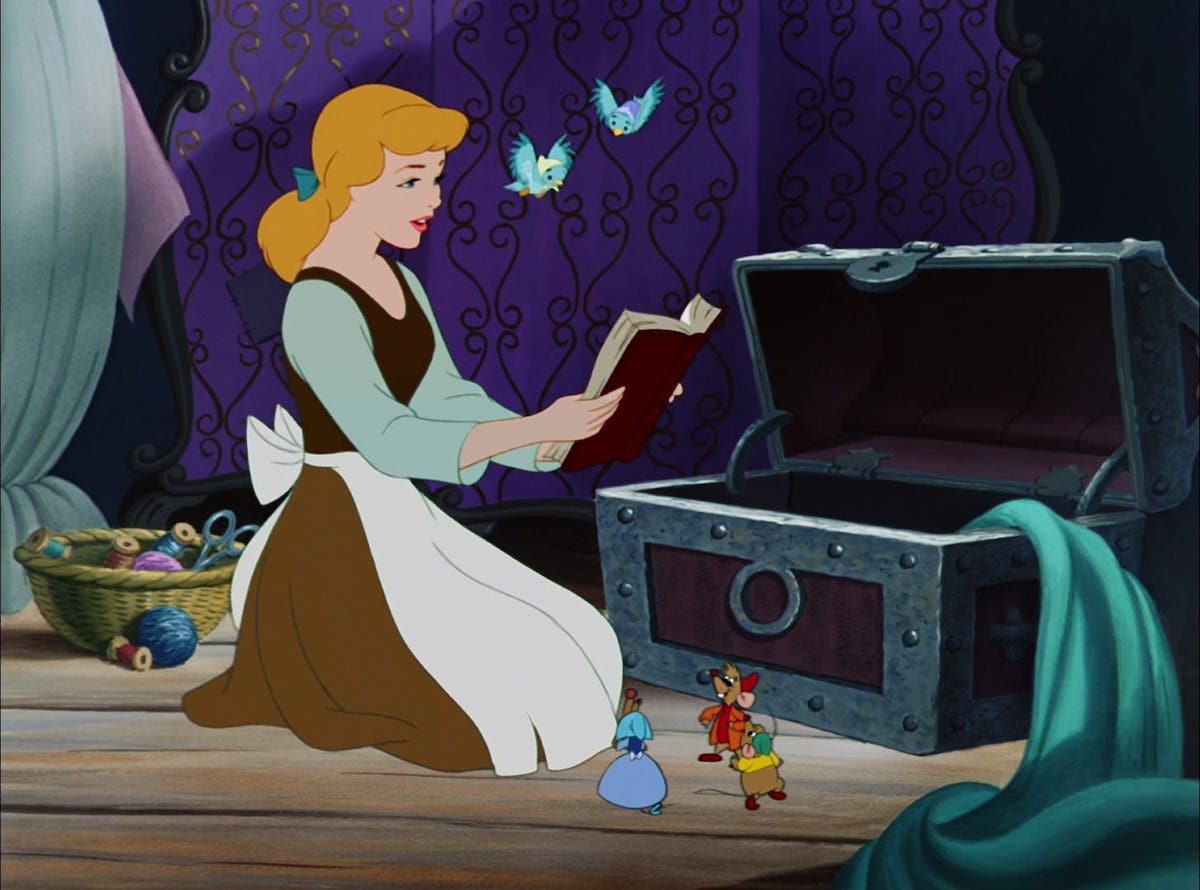BREAKING & ENTERING: Negotiating Negotiations Part 1
Negotiations can be a wild ride. Barri Evins shares what to do when your first time at the rodeo is a free option and how to make the most of it to launch your career.
A producer who’s sold to all the majors, Barri Evins created Big Ideas to give aspiring screenwriters what it takes to break into the business by sharing methods she uses with professional writers. Sign up for Barri's newsletter and follow her on Twitter @BigBigIdeas.
First Time At The Rodeo
Negotiations can be a wild ride.
Writers may think that they will never have to sully their hands with actual negotiations – that’s what agents, managers and lawyers are for, right? Well, yes, they are on the frontlines, but it’s going to be up to you to when it comes to “advise and consent.”
I am not a lawyer, nor do I even play one on TV. I am not offering legal advice, but I believe it’s best for writers to avoid going into negotiations clueless. Hopefully, these real-life examples can help you grasp the lingo and the basics of writing deals and negotiations. You need to know what you want, and what you can expect. When to fight, and when to meet in the middle.
My first ever industry negotiation was for the film rights to a soon-to-be published novel with a seasoned agent. I did my homework, studying up on book deals – with help from my industry mentors – went over the deal points carefully, and felt I had everything in place before the call began.
A longtime agent and head of a prestigious boutique literary agency, was on the other end of the line. Everything seemed to be going swimmingly, until suddenly he started shouting. He was screaming at me about a deal point that he was very unhappy about.
My. Jaw. Hit. The. Ground.
(Thank goodness this was before Skype!)
This was my first time at the rodeo.
I was determined to hang on tight and hold on to my hat.
I took a deep breath, wound up the call, and told him that I would get back to him with a counteroffer.
Cut to: Negotiation Counteroffer
I made a few changes to the deal points, but I didn’t change the one that made the agent holler. I couldn’t. I was negotiating with my own money, along with that of two producing partners. You better believe I had a ceiling – the upper limit of where I could go. It wasn’t just my pocket that would feel the pinch. I had to get this done as my partners and I had agreed.
We reviewed the counteroffer. Guess what? No yelling about the unchanged deal point. We moved right past it – as if it was never an issue.
It was then that I realized that the roaring had been a negotiating technique, designed to shake me. It wasn’t about the deal at all.
Best. Lesson. Ever.
I was never again intimidated in a negotiation.
Negotiations: The Free Option
While your mantra may be "Show me the money," the first negotiations a new writer is likely to encounter are “Free Options.” A huge dilemma; I know. A producer is enthusiastic about your material and they want a free option to give them the exclusive right to market it, or to develop, package, and then market the material, for a specific amount of time. Often twelve to eighteen months. It’s easy to feel that you’re being taken advantage of.
At this point in your career, you may have no one in your corner to represent you. Since you’re likely to negotiate this one on your own, you need to be as informed as possible. It’s no piece of cake, but go with your gut to make the best decision possible for your future.
I believe the Free Option is a trade off that can pay off.
If you have someone who has credits, connections, and a vision for the project that is in sync with yours, it’s likely well worth it to get their expertise and their weight behind your project. Go for it. It’s only going to improve your odds of getting your project made.
If someone has lots of passion, but little else to advance your project, I’d be a bit leery about entering into a deal. If you do, keep the rights term short (six months) so you aren’t tied up for a long time if no progress is made. If the project moves forward, you can always extend the option period.
In either case, don’t ignore the shared vision component. Make certain to discuss where the producer sees the project heading – in story especially – but also ask for their ideas on casting, directing, and budget. If you put people in your boat who are not rowing in the same direction, you won’t get very far.
On the other hand, if you have someone with chops, be open to their notes. Working for Debra Hill, who among her more than two-dozen produced films, co-created and produced the highly lucrative Halloween franchise; I saw my share of horror scripts. This was despite my being adamant in my dealings with agents that we weren’t interested in the genre.
Nevertheless, one horror script crossed my desk that had a clever and cool spin. It had a fresh/quirky feel and would appeal to a younger audience. Unique enough to pique my interest. Enough to pitch it to Debra, who was intrigued.
My next step was to set a lunch with the novice writer, myself, and my junior exec, to discuss the project. On the day of the lunch, Debra’s own lunch happened to cancel, and she decided to join us. Suddenly this newbie was in a lunch with the Queen of Horror. Holy Smokes! Right?
The junior exec and I had one major note about the “creature,” and it's origin story, that we discussed in-house in anticipation of our meeting. In all fairness, this aspect of the story didn’t mesh well with the rest of the piece.
The writer did not merely dig in his heels to oppose our concern. He wasn’t even open to discussing options. His position was essentially, “No, nope, no way.” Beyond being inflexible, his attitude made it clear that he wasn’t going to be pleasant to work with. That counts in this business. He was so standoffish, that he wouldn’t even step out of my office to join in a company birthday party. I brought him a piece of cake, a sweet parting gift for something that needlessly ended on a sour note.
As President of Debra’s production company, I negotiated a lot of deals for free options on promising projects from writers without a track record. These projects had strong concepts and the writing showed potential, but the scripts definitely needed development before going to buyers.
We would offer a fairly standard one-page “letter agreement” binding both parties, laying out the basic deal points, and giving us the time needed to develop and market the script. Always, always one page.
My theory is that the minute you go over one page, people get nervous and feel they should lawyer up. I’m completely comfortable with a writer having someone look over an option before signing. If you can get some professional advice, by all means do so. Generally, the Free Option is standard boilerplate with minor variables, mostly on the duration of the rights period.
My job is to buy us plenty of time to get the project in great shape and fully explore the marketplace. That’s what I’m going to be pressing for; but I always offer a fair deal. I have, however, cheated a lot of margins to keep it to one page.
At its absolutely most basic, a letter agreement between a producer and a writer to option material should define The Rights Period, the Extension to The Rights Period, Post Term Rights, and an Exit Agreement. If it’s a paid option, Fees are spelled out.
I’ve found that when you treat people with respect, and make a deal that reasonably protects everyone, you set the tone for a productive working relationship.
That’s the true art of negotiation.
Admittedly, the “Free Option” can be a tough decision for a writer. You’re eager to break in, but you envisioned money on the table.
Weigh your options, and decide when it’s worth taking the leap to tie up your script in exchange for the expertise and access you gain when partnering with a strong producer. If the company is enthusiastic about your writing and your potential, they might recommend you to an agent or manager. If they make a good match, it’s a win-win-win for everyone involved – the agent or manager, the executive and you.
My advice: Be bold and bring it up when the relationship is solidified and the timing is right. This is one way a Free Option can help launch your career.
And when the draft is ready to go out to the town, you have a respected producer introducing your work to executives at director and actor-driven companies for packaging, if appropriate, and to studio execs. Even if they pass on this project, if they responded to your idea and your execution, they may want to meet with you in the hopes of building a relationship and getting a look at your next project.
Have you faced a Free Option dilemma, or are struggling with one now? Share your stories, worries, and insights on negotiations in the comments!
Next month, Negotiating Negotiations Part 2.
- More articles by Barri Evins
- Legally Speaking, It Depends: Do I Need an Entertainment Attorney
- Legally Speaking, It Depends: Agreements - Demystifying Contracts
Get tips from Barri Evins on getting an exec's attention in her webinar
Loglines, Queries & Synopses:
How to Take Your Script from Being Ignored to Getting Noticed!
Barri Evins draws on decades of industry experience to give writers practical advice on elevating their craft and advancing their career. Her next SCREENWRITING ELEVATED online seminar with 7 monthly sessions plus mentorship will be announced in 2025. Breaking & Entering is peppered with real life anecdotes – good, bad, and hilarious – as stories are the greatest teacher. A working film producer and longtime industry executive, culminating in President of Production for Debra Hill, Barri developed, packaged, and sold projects to Warners, Universal, Disney, Nickelodeon, New Line, and HBO. Known for her keen eye for up and coming talent and spotting engaging ideas that became successful stories, Barri also worked extensively with A-List writers and directors. As a writer, she co-wrote a treatment sold in a preemptive six-figure deal to Warners, and a Fox Family project. As a teacher and consultant, Barri enables writers to achieve their vision for their stories and succeed in getting industry attention through innovative seminars, interactive consultations, and empowering mentorship. Follow her on Facebook or join her newsletter. Explore her Big Ideas website, to find out about consultations and seminars. And check out her blog, which includes the wit and wisdom of her pal, Dr. Paige Turner. See Barri in action on YouTube. Instagram: @bigbigideas X: @bigbigideas


![The Era of the Multi-Hyphenate: An Interview With Writer and Filmmaker Mario O. Moreno [SERIES]](https://scriptmag.com/uploads/MjEzMTEyNzA4NjQ2NTc3NjE1/the-era-of-the-multi-hyphenate-series-script-hero.png?format=auto&optimize=high&width=1440)


